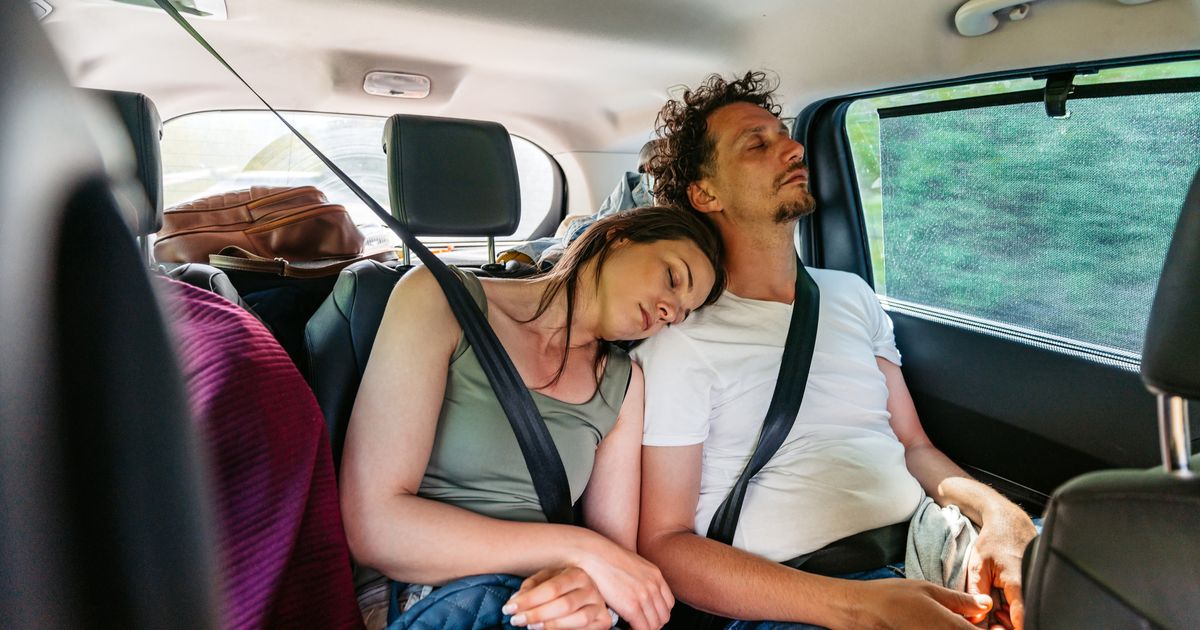Planning a road trip this summer? While you’re busy deciding on destinations, routes, and preparing your car, there’s one crucial task you shouldn’t overlook: taking breaks. Cardiologists agree that frequent breaks are the single most important thing to do during long car rides. Whether you’re young, old, healthy, or dealing with a chronic condition, it’s essential to get out of the car and move around every one to two hours if your trip will last at least four hours. Prolonged sitting in the car can disrupt blood flow, cause dehydration, and contribute to the formation of blood clots. Dr. Vladimir Lakhter, an assistant professor of medicine at the Lewis Katz School of Medicine at Temple University, explains that sitting for long periods increases the risk of deep vein thrombosis (DVT), a type of blood clot that forms in the deep veins of the legs.
During car rides, blood flow in your body is affected. As you move around, your calf and thigh muscles assist in pumping blood from the deep veins up towards your heart. However, after a few hours in the car, blood starts to pool in the veins of your lower legs and calves because the lower half of your body is inactive. This pooling of blood leads to the formation of a soft jelly-like mass as platelets begin to adhere to each other. The coagulation cascade, a series of processes involved in blood clotting, then activates. It’s like knocking over a row of dominoes – the clot can propagate and pose a serious threat.
Deep vein thrombosis occurs when a clot forms in a vein deep in your body, such as in the lower leg or thigh. This can cause pain and swelling in the leg. However, when you start moving again after being sedentary for a long time, the muscles contract and can break the clot loose. The clot then flows upwards with the natural direction of blood flow in the body. If it reaches the main arteries in the lungs, a pulmonary embolism can occur, which is a sudden blockage that can be fatal. Symptoms of a pulmonary embolism include shortness of breath, chest pain, lightheadedness, cough, and back pain.
It’s important to note that anyone can get a blood clot, regardless of age or overall health. However, certain individuals face a higher risk, such as older adults, individuals with a personal or family history of blood clots, those undergoing cancer treatment, and individuals with inherited or acquired clotting disorders. Recent surgery can also increase the risk. The more risk factors a person has, the higher the chance of developing a clot while traveling. Additionally, the risk doesn’t disappear immediately after the trip ends. It remains elevated for the week following the journey and can linger for several weeks.
To make the most of your breaks during a road trip, it’s recommended to get out of the car and take a brief walk every hour or so. This allows your leg muscles to contract and keep the blood circulation moving efficiently. Staying hydrated is also essential as dehydration is a known risk factor for clots. Avoid consuming beverages that can dehydrate the body, such as caffeine and alcohol. Wearing compression socks or stockings can support blood flow in the lower legs and reduce the risk of clots. Loose-fitting clothing is preferred as tight apparel restricts blood flow.
For individuals at an extremely high risk, taking a blood thinner may be necessary. Speak to a healthcare provider to see if preventive treatments like low-molecular-weight heparin injections or factor Xa inhibitors are suitable. If you can’t take breaks, there are exercises you can do in the car to minimize the risk of clots, such as extending your legs straight out, flexing your ankles, doing knee lifts, and forward flexes. Simply tightening and releasing your leg muscles can also help.
Remember, the risk of DVT or pulmonary embolism persists even after the trip is over. If you experience any suspicious symptoms, it’s important to contact a healthcare provider as soon as possible. Early intervention can prevent serious complications and, in some cases, be life-saving.
Denial of responsibility! VigourTimes is an automatic aggregator of Global media. In each content, the hyperlink to the primary source is specified. All trademarks belong to their rightful owners, and all materials to their authors. For any complaint, please reach us at – [email protected]. We will take necessary action within 24 hours.


